Written by Natalia Hurtado & Casey Harris, Research Scientists (PIMS & CEI)
If you’ve ever been diving, snorkeling or spear fishing on a coral reef, you probably noticed corals that look like a human brain. Did you know that there are 4 different brain coral species in the Caribbean? Properly identifying them can be tricky at first because you have to look closely at their valleys and ridges to spot differences between them. We are here to help you master your Caribbean brain coral identification skills. Is your brain up for the challenge?
Two colonies of Diploria labyrinthiformis on a coral reef in The Bahamas.
Brain corals grow very slowly by only a few millimeters per year and they are essential foundation species because they build durable structures that support the reef. These stony corals form a super hard calcium carbonate skeleton with a wrinkled surface that resembles a human brain. You can find brain corals from the shallowest parts of the reef down to 40 meters (130 feet) and they are generally round and sometimes reach sizes over 2 meters (6 feet) in diameter, depending on the species. Once they get big, brain corals provide habitat to countless marine species and contribute to coastal protection by standing strong in the face of storms and hurricanes.The four Caribbean brain corals are all simultaneous hermaphrodite (both male and female combined) broadcasting species that release gamete bundles (egg and sperm) into the water column every year. Since they are such slow growers, brain corals spawn multiple times a year to ensure coral recruitment success on the reef.
Colpophyllia natans releasing gamete bundles during a spawning event.

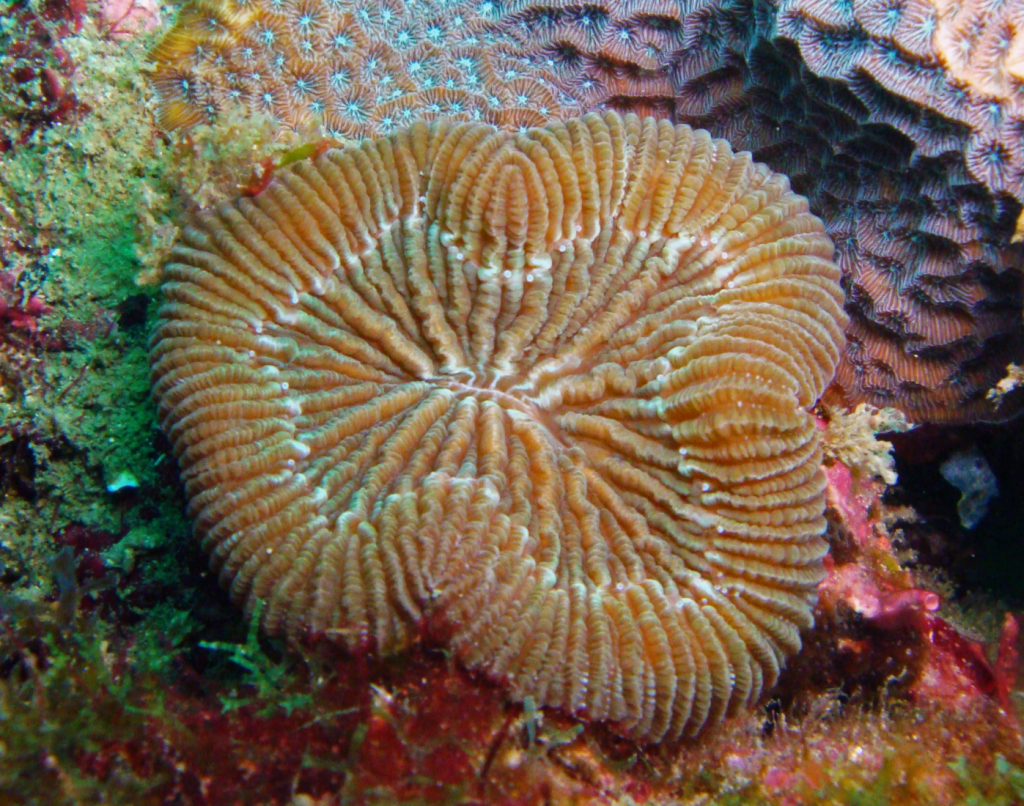

Colpophyllia natans life history stages – left to right: recruit, juvenile, and adult colonies
Brain coral polyps – genetically identical animals that make up a coral – are unique because they are connected, which is called intratentacular budding. In contrast, most other stony coral that have extratentactular budding, where their polyps aren’t directly connected to each other but only connected by a small layer of tissue. A connected budding strategy helps them to efficiently exchange food and nutrients throughout the whole colony, but at the same time makes them more vulnerable to diseases.
Diagram of intratentacular (left) and extratentactular budding. (Barnes 1986).


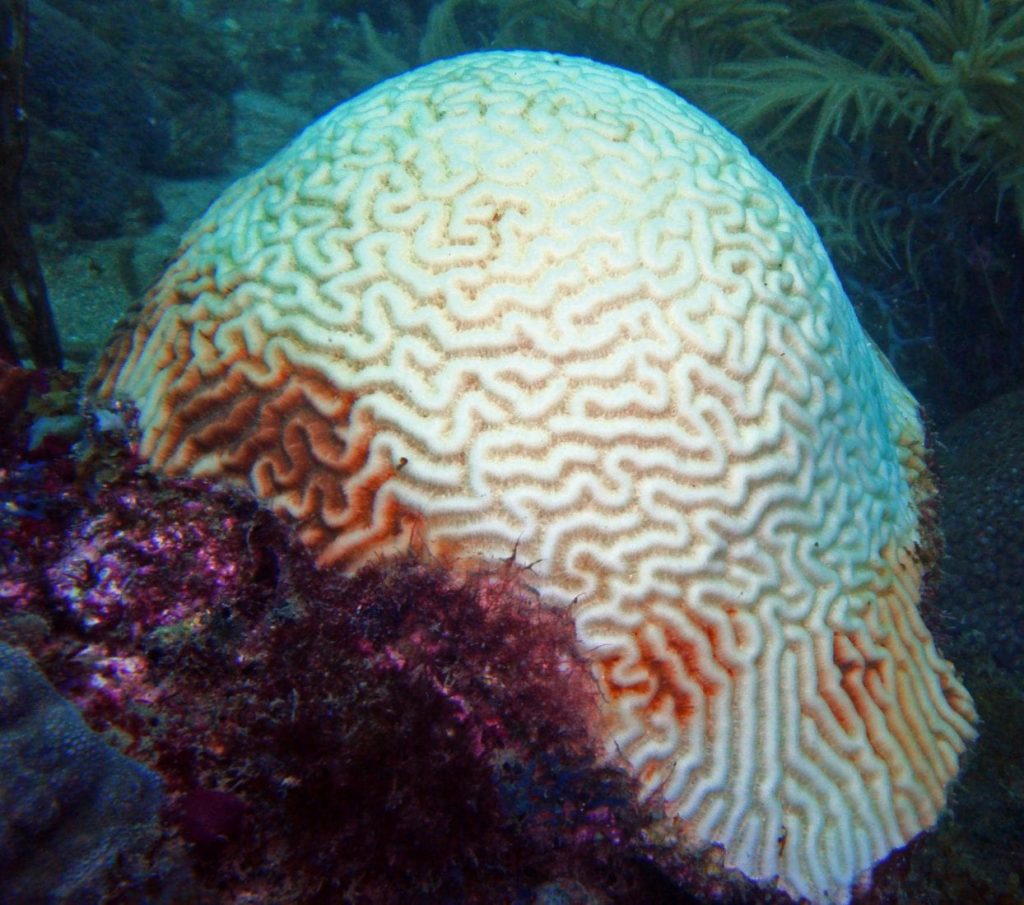
Left to right: Diploria labyrinthiformis infected with stony coral tissue loss disease, Colpophyllia natans infected with black band disease, and a bleached Colpophyllia natans.
Let’s take a closer look at our 4 brain coral species:Grooved brain coral (Diploria labyrinthiformis) – the easiest brain to identify This brain coral forms massive hemispherical colonies and is easily recognizable by its wide double-valley character, as its scientific name says, looks like a labyrinth. They are normally a pale yellow, gray or tan color and can be found in the western Atlantic between 0 – 148 feet (0 – 45 meters).


Boulder brain coral (Colpophyllia natans) – the biggest brain This important reef-builder can form impressive large rounded domes up to 2 meters (6 feet) in diameter, but they can also form large rounded plates. The surface is covered with wide meandering ridges and valleys stretching across the entire colony. You can tell this species apart from other brain corals by looking closely at the small lines running from the top of the ridges to the middle of the valleys. Typically, the colony will have darker ridges with vibrant green, tan, or whitish valleys.
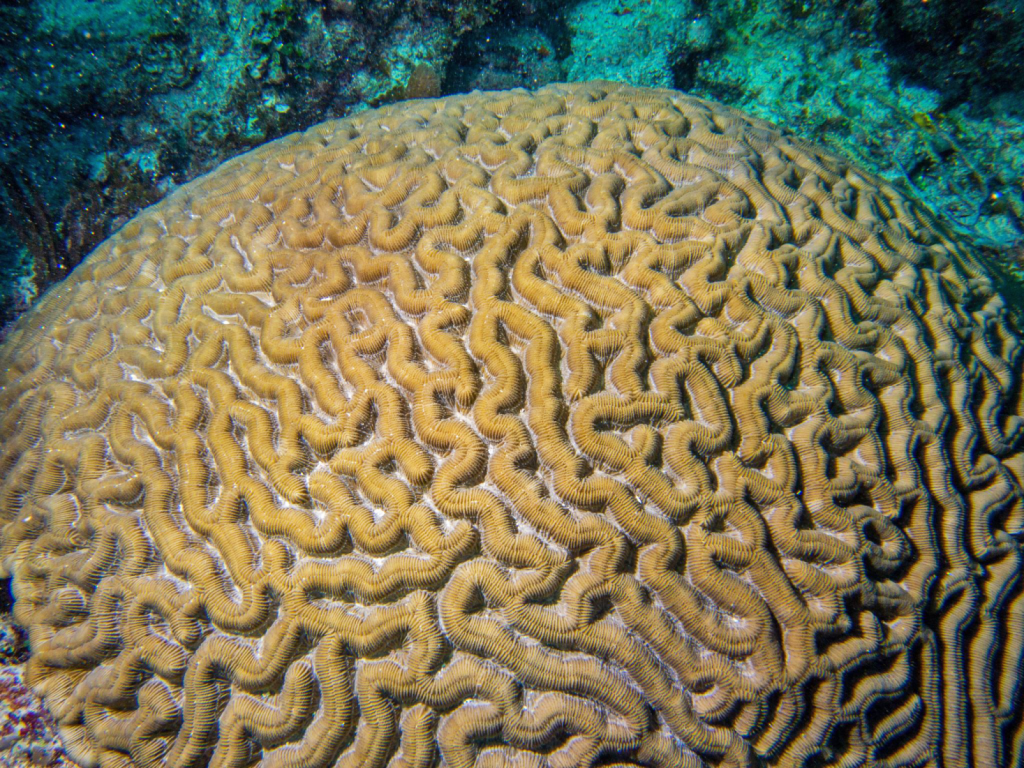
Symmetrical brain coral (Pseudodiploria strigosa) – the dominant brainThis brain coral is a dominant Caribbean reef-builder species that forms hemispherical domes or smoothly contoured plates. Their ridges are long and symmetrical and they are generally found in pale yellow, purple-brown, or gray colors. The symmetrical brain coral can be found between 1 and 40 meters (3 – 130 feet) and can reach sizes around 15 to 180 centimeters (6 inches – 6 feet). It’s common for people to mix up boulder and symmetrical brain coral, but if you look closely at the ridges, the symmetrical brain coral has thinner ridges and does not have that distinct groove running down the center of the ridge to the middle of the valley.


Knobby brain coral (Pseudodiploria clivosa) – the melting brain This coral species used to be classified under the genera Diploria, but due to their small narrow ridges, was reclassified as Pseudodiploria. The knobby brain coral can grow into large encrusting mounds, making it appear melted onto the reef. Colonies form knobby bumps and have thinner ridges compared with the other 3 brain coral species. They generally prefer shallow water but can be found up to 40 meters (130 feet) in depth and can be found in green to brown and yellow-brown to light gray colors.


Don’t get confused with Meandrina meandrites – the maze coral Although not considered a brain coral, the maze coral could be confused with one. The maze coral is an encrusting species that can form hemispherical colonies or flat plates that may grow up to 1 m (3 ft) in diameter. Some colonies are columnar and can grow up to 3 or 4 times their width. You can easily ID the maze coral from other brain corals by its large bulging septa (skeletal plates) that alternate like a zipper. Unlike brain corals, maze corals are a gonochoric, broadcasting species that release eggs and sperm separately.



“Seafood Nation” Documentary Premiere Explores the Heart of Bahamian Culture and the Future of Fisheries
NASSAU, The Bahamas | December 5, 2025 – From the bustling stalls of Potter’s Cay to family kitchen tables across the archipelago, seafood is far more than just sustenance in

PIMS and Disney Conservation Fund Partner to Train 19 Government Divers
PIMS dive training in Nassau strengthened national coral restoration capacity across government agencies. Bahamas Dive Training Builds National Coral Restoration Capacity Last fall, between the months of September and October,
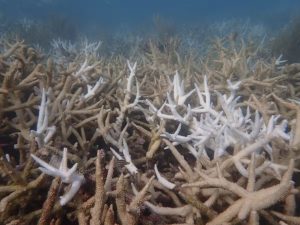
Florida’s Coral Reef Crossed a Line: What Functional Extinction Really Means for Elkhorn and Staghorn Corals
Reefs didn’t just bleach. They functionally vanished in one summer. A new Science study co-authored by researchers from the Perry Institute for Marine Science (PIMS) has found that Florida’s two
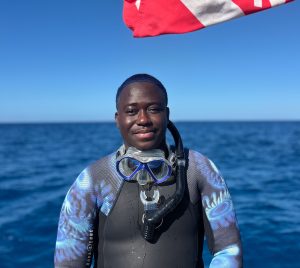
Q&A: Understanding the IDC Course at PIMS with Duran Mitchell
A former aquarist turned coral conservationist, Duran is passionate about understanding how all marine life connects. PIMS & IDC: Empowering New Dive Instructors for Marine Conservation PIMS & IDC: Empowering
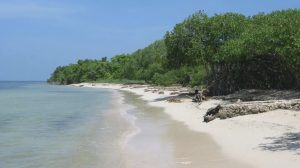
Forbes Shines a Spotlight on Coral Reef Restoration in the Caribbean
When Forbes highlights coral reef restoration, it signals something powerful: the world is paying attention to the urgent fight to protect reefs. And solutions are within reach. Recently, Forbes featured Dr. Valeria

New Reef Rescue Diver Course: Volunteer in Coral Reef Restoration Abroad
Coral reefs are often called the rainforests of the sea—complex ecosystems that shelter a quarter of all marine life, feed millions of people, protect coastlines from storms, and attract travelers


